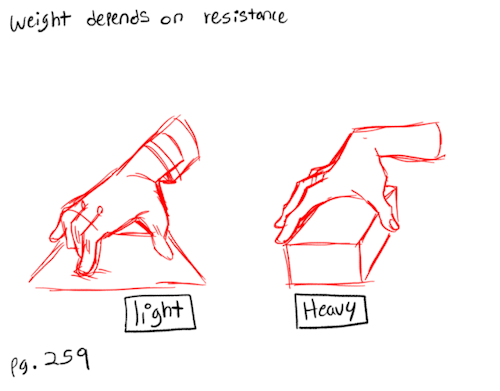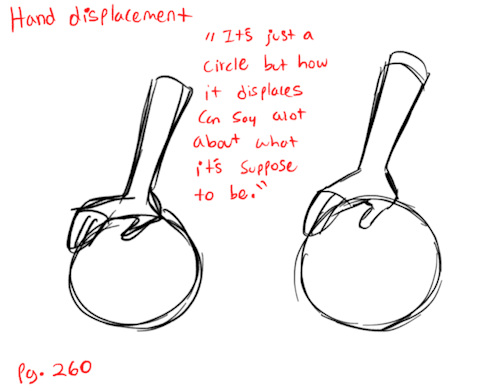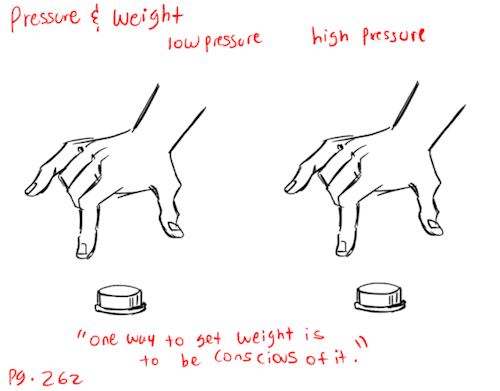Today Was Proof That I Am Terrible At Baking Sweets
Today was proof that I am terrible at baking sweets
More Posts from Linmhd and Others
Maladaptive Daydreaming Dictionary
None of these terms, other than Maladaptive Daydreaming (Disorder) and Fantasy Prone Personality are official. Some of them, such as para and character, are synonymous and just a matter of preference. Therefore don’t feel as though you have to use any of these, this is just a reference for people who want to understand more about their condition and the terms used by the community.
actuallyMaDD: A tag used by maladaptive daydreamers to share their experiences. Coined by @bpdrotten . see also: MaDD
character: A person who appears often in your daydreams. Can be fictional, original or real (such as a celebrity). Maladaptive daydreamers usually develop strong emotional attachments to their characters and characters can be very well developed with detailed personalities, relationships and backstories. see also: para, para-
Compulsive Fantasy: a lesser used term for Maladaptive Daydreaming. see also: Maladaptive Daydreaming
daydreamingart: a tag used by maladaptive daydreamers to share art or writing about the content of their daydreams. Coined by @queenofdissocation . see also: maddart
daydreaming: Just as in regular English, daydreaming refers to imagining scenarios while losing track of the real world. It is important to note that when maladaptive daydreamers refer to daydreaming they are usually referring to doing it for hours at a time if uninterrupted, whereas other people might think of daydreaming as zoning out for five minutes when bored.
daydream crash: A) when a maladaptive daydreamer is forced to come to terms with the fact their daydreams are not real, leading to discomfort and sadness or B) when these daydreams no longer have the same effect that they used to and no longer feel as good. Coined by @maladaptive-daydreams .
daydream self/dream self (or any variation): many though not all maladaptive daydreamers have daydreams that involve themselves. They may imagine a version of themselves that is realistic or idealised or anywhere in between. This character is your dream self. see also: parame
(daydream) trigger: something that leads to a craving or compulsion to daydream. The most common trigger is music, followed by other forms of media such as TV, video games and books.
daydream universe/daydreamverse/dreamverse: the imaginary world or worlds where daydreams are set. see also: paracosm
fantasy/fantasising: see daydreaming.
Fantasy Prone Personality (FPP): a personality trait that means someone has a strong, lifelong involvement in fantasy and imagination. Signs of FPP include delusions and hallucinations (such as having intense spiritual/paranormal experiences, experiencing imagined sensations as real and confusing daydreams with real memories) as well as spending over half your waking time daydreaming. Maladaptive Daydreaming is more likely to affect those with Fantasy Prone Personality, however being a maladaptive daydreamer doesn’t necessarily mean you have FPP. Check the Wikipedia article for more information.
imaginary friend: an imaginary person that someone pretends to interact with in the real world, for the sake of companionship, entertainment or (for children) play. Not the same thing as a character or para. Maladaptive daydreamers interact with their characters/paras in their daydreams, whereas imaginary friends are imagined as existing in the real world. Maladaptive daydreamers can also have their characters as imaginary friends, however. compare: character, para
inhabitant: a less common word for para. Short for daydream inhabitant. Coined by @avpdkaneki . see also: character
linear universe: a daydream universe with only one world, which usually has one main storyline (i.e. one series of events which the maladaptive daydreamer daydreams about). Coined by @ni-ghtdreams . compare: multiple universes, non-linear daydreams
MaDD/MADD/madd - acronym, short for Maladaptive Daydreaming Disorder.
maddart: see daydreamingart. Coined by @queenofdissocation .
Maladaptive Daydreaming (Disorder): a mental illness characterised by compulsive daydreaming that takes over a large part of someone’s life, to the extent that it interferes with or replaces things like work, school, real-life relationships, hobbies, getting up and going to sleep. When daydreaming, maladaptive daydreamers are content and also feel the emotions that their characters/paras are feeling. At the same time, daydreamers often engage in a repetitive activity (e.g. pacing or rocking back and forth). When not daydreaming, they experience regular cravings to resume their daydreams and often have trouble concentrating the world around them. It is debatable whether Maladaptive Daydreaming is a disorder, addiction or other type of mental illness. Currently, it is not officially psychologically recognised as a mental illness, therefore it is impossible to have it diagnosed by a therapist. The term was first coined by Eli Somer in 2002. see also: MaDD, MDD, MD, maladaptive daydreamer, Fantasy Prone Personality
(maladaptive) daydreamer: a person with Maladaptive Daydreaming.
MDD: mistakenly used as an acronym for Maladaptive Daydreaming Disorder. In fact, MDD stands for Major Depressive Disorder and the community has asked that we stop using the tag. To avoid confusion, use the acronym MaDD. see also: MD, MaDD
MD: an acronym short for Maladaptive Daydreaming, proposed as an alternative to MDD. However there is still some confusion in that it could stand for Major Depression. It’s best to use the acronym MaDD. see also, MDD, MaDD
multiple universes: a daydream universe with more than one world or timeline which the maladaptive daydreamer fantasises about. Coined by @ni-ghtdreams . compare: linear universe, non-linear daydreams
neuronarrative: the intense, divergent imaginings of fantasy prone people. Neuronarrative refers to extensive daydreams that are often accompanied by a repetitive activity, although these daydreams/narratives are not necessarily maladaptive and do not necessarily make it difficult for someone to live their life. In other words, the term has no negative connotations. All maladaptive daydreamers are neuronarrators, but not all neuronarrators are maladaptive daydreamers. Coined by @autisticworlds . see also: neuronarrator, Fantasy Prone Personality, traveling compare: Maladaptive Daydreaming
neuronarrator: a person who experiences neuronarrative. compare: maladaptive daydreamer
non-linear daydreams: daydreams that are not all based in one world or a series of worlds - daydreams that are more random in nature and don’t have much in common in terms of timeline and setting. Coined by @ni-ghtdreams . compare: linear universe, multiple universes
para: see character. Due to the level of emotional attachment and the amount of time spent interacting with them, some daydreamers feel that ‘characters’ isn’t a strong enough word to describe the people in their daydreams. Para is used as an alternative. It comes from the word paracosm and was coined by @schizotypaldaydreamer .
para-: a prefix that can presumably be used in front of anything to show that it is from your daydream universe, though it is almost always used for people. For example, a para/character who is your friend in your daydreams would be referred to as a ‘parafriend’. see also: para, character, daydream universe, paracosm
paracosm: an imaginary world. Typically a paracosm is quite developed and may have its own imagined geography, laws, people, places, customs, history, language, etc. A famous example of a paracosm is Middle Earth. You do not have to be a maladaptive daydreamer to have a paracosm. Check the Wikipedia article for more information.
parame: see daydream self. Short for ‘parallel me’ and also coined by @schizotypaldaydreamer . see also: para-
thisverse: a word for reality/the real world, in comparison to a daydream universe or paracosm. Coined by @schizotypaldaydreamer .
traveling: a term created to be synonymous with Maladaptive Daydreaming but without the negative connotations, for those who don’t find their extensive imagining to be a problem. It has since been replaced by neuronarrative, which is not synonymous with Maladaptive Daydreaming. Coined by @autisticworlds .
Feel free to add any other terms that you think are relevant, as long as they’re being used by more than one person (otherwise it’s just individual preference).
💗💗
Relationships are about helping each other grow and that involves emotional labor on both parts both big and small things. If you know your partner has some sort of anxiety issue or w/e sending “hey i’ll be busy today i’ll text you when i can love you” will literally absolve so many issues in less than 30 seconds. But you freaks up here seem to think that caring about someone and catering to them (to a certain degree) is weird and unhealthy. And you wonder why you have no good relationships romantic or platonic.

So you might be saying: Lion why a guide on drawing black people? Well young blood it’s because a lot of people cant…seem…to draw…black people..Amazing I know.

Racist (caricatures) portrayals of black people have been around forever, and to this day people can’t seem to draw black people like they are human. If your artwork resembles any of the above even remotely your artwork is racist and offensive. If you try to excuse that as a stylistic choice you’re not only a terrible artist, but racist too!!! Congrats.

Whitewashing is also a problem. A lot of people refuse to draw black features on canonly black characters. While this example isn’t colored, lightening the skin-tone of a character is also considered whitewashing. So lets start with features!

Now all black people have different noses thats a no-brainer, but black noses tend to have flatter bridges, and wider nostrils. Please stay from triangular anime noses and small button noses. Your drawings should not depict black people with abnormally large noses. (Especially if you do not draw other characters this way)

If you feel like the way you draw lips on black characters is offensive or resembles a caricature,it probably does and you should change it. ABSOLUTELY AVOID PLACING LIPS AT THE BOTTOM OF THE FACE.

Hair is so diverse! Please get used to drawing braids, locs,kinks and coils! If you can learn to draw ringlets and long waves you can learn how to draw black hairstyles.

Add clips! Learn how to draw baby-hairs and never be afraid to add color Pinterest and Google are free my dudes! Also try using square brushes for blocking in coils.
OK THAT’S ALL YOU GUYS



crying over this
sleeping positions that fuck up your spine feel so good for no reason it’s literally the devil’s deepest temptation

it’s been a month since i actually talked to anyone beside my family, and no one noticed 🫶🏻 what a fucking good day to die
It’s important to do your own research




Notes from “The Animator’s Survival Kit” book.
[Pg.259 - 265] This is the end of my book studies. I’m pretty proud to have gotten through it and do a handful of the exercises. But this is only step one, I’m moving onto more advance animation techniques and will be posting those as I complete them. At the moment I’m currently wrestling with Toon Boom, so we’ll see how that goes.
——————- Tools: Rough Animator - Ipad + Apple Pen Patreon: [patreon.com/lunaartgallery] Twitter: [@LunaArt_Gallery] Instagram: [@lunaartgallerys]
-
 linmhd reblogged this · 4 years ago
linmhd reblogged this · 4 years ago
